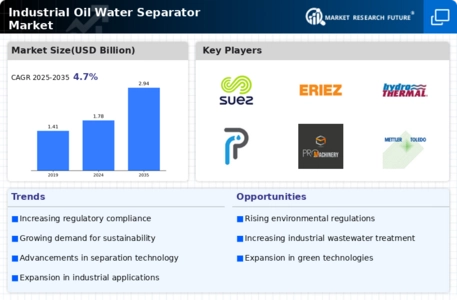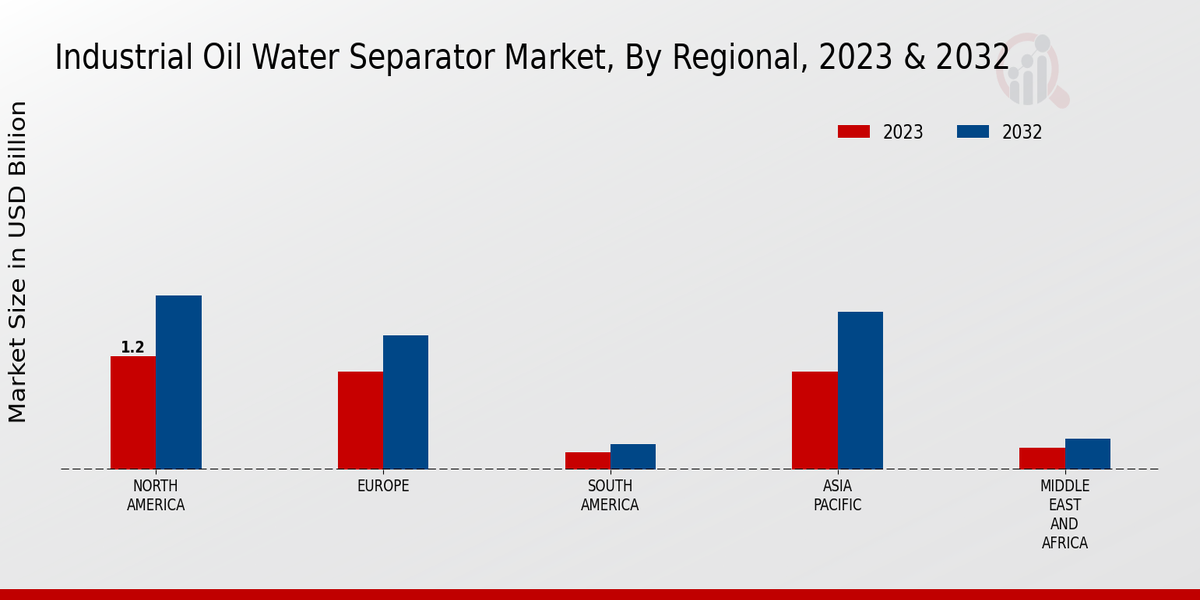Rising Industrialization
Rapid industrialization across various regions is a key driver for the Global Industrial Oil Water Separator Market Industry. As industries expand, the volume of wastewater generated increases, necessitating efficient treatment solutions. Countries in Asia-Pacific, particularly China and India, are witnessing significant industrial growth, leading to heightened demand for oil water separators. This trend is expected to contribute to the market's growth, with projections indicating a rise to 2.94 USD Billion by 2035. The need for sustainable practices in industrial operations further emphasizes the importance of oil water separators in managing wastewater effectively.
Market Growth Projections
The Global Industrial Oil Water Separator Market Industry is poised for substantial growth, with projections indicating a market value of 1.78 USD Billion in 2024 and an anticipated increase to 2.94 USD Billion by 2035. This growth trajectory suggests a compound annual growth rate of 4.67% from 2025 to 2035, reflecting the increasing demand for effective wastewater treatment solutions across various industries. Factors such as rising industrialization, stringent environmental regulations, and technological advancements are likely to contribute to this upward trend, positioning the market for continued expansion in the coming years.
Technological Advancements
Innovations in technology are transforming the Global Industrial Oil Water Separator Market Industry. Advanced separation technologies, such as membrane filtration and coalescing systems, are enhancing the efficiency of oil water separators. These technologies not only improve separation rates but also reduce operational costs for industries. For example, the integration of smart sensors and automation in separator systems allows for real-time monitoring and optimization. As industries increasingly adopt these advanced solutions, the market is likely to experience a compound annual growth rate of 4.67% from 2025 to 2035, indicating a shift towards more efficient wastewater treatment methods.
Expansion of Oil and Gas Sector
The expansion of the oil and gas sector is a significant driver for the Global Industrial Oil Water Separator Market Industry. As exploration and production activities increase, the need for effective wastewater treatment solutions becomes paramount. Oil and gas operations generate substantial amounts of oily wastewater, necessitating the use of oil water separators to comply with environmental standards. This sector's growth is expected to contribute to the market's rise, with projections indicating a value of 2.94 USD Billion by 2035. The demand for efficient separators in this industry underscores the critical role they play in minimizing environmental impacts.
Increasing Environmental Regulations
The Global Industrial Oil Water Separator Market Industry is experiencing growth due to stringent environmental regulations aimed at reducing water pollution. Governments worldwide are implementing policies that mandate the treatment of industrial wastewater before discharge. For instance, the European Union has established directives that require industries to minimize oil contamination in water bodies. This regulatory pressure is likely to drive the demand for oil water separators, as companies seek compliance with these laws. As a result, the market is projected to reach 1.78 USD Billion in 2024, reflecting the increasing need for effective wastewater management solutions.
Growing Awareness of Water Conservation
The increasing awareness of water conservation practices is driving the Global Industrial Oil Water Separator Market Industry. Industries are recognizing the importance of sustainable water management to mitigate environmental impacts. This awareness is prompting companies to invest in oil water separators to recycle and treat wastewater effectively. Initiatives promoting water reuse in industrial processes further support this trend. As a result, the market is expected to grow significantly, with a projected value of 1.78 USD Billion in 2024. The emphasis on sustainable practices aligns with global efforts to conserve water resources and protect ecosystems.









